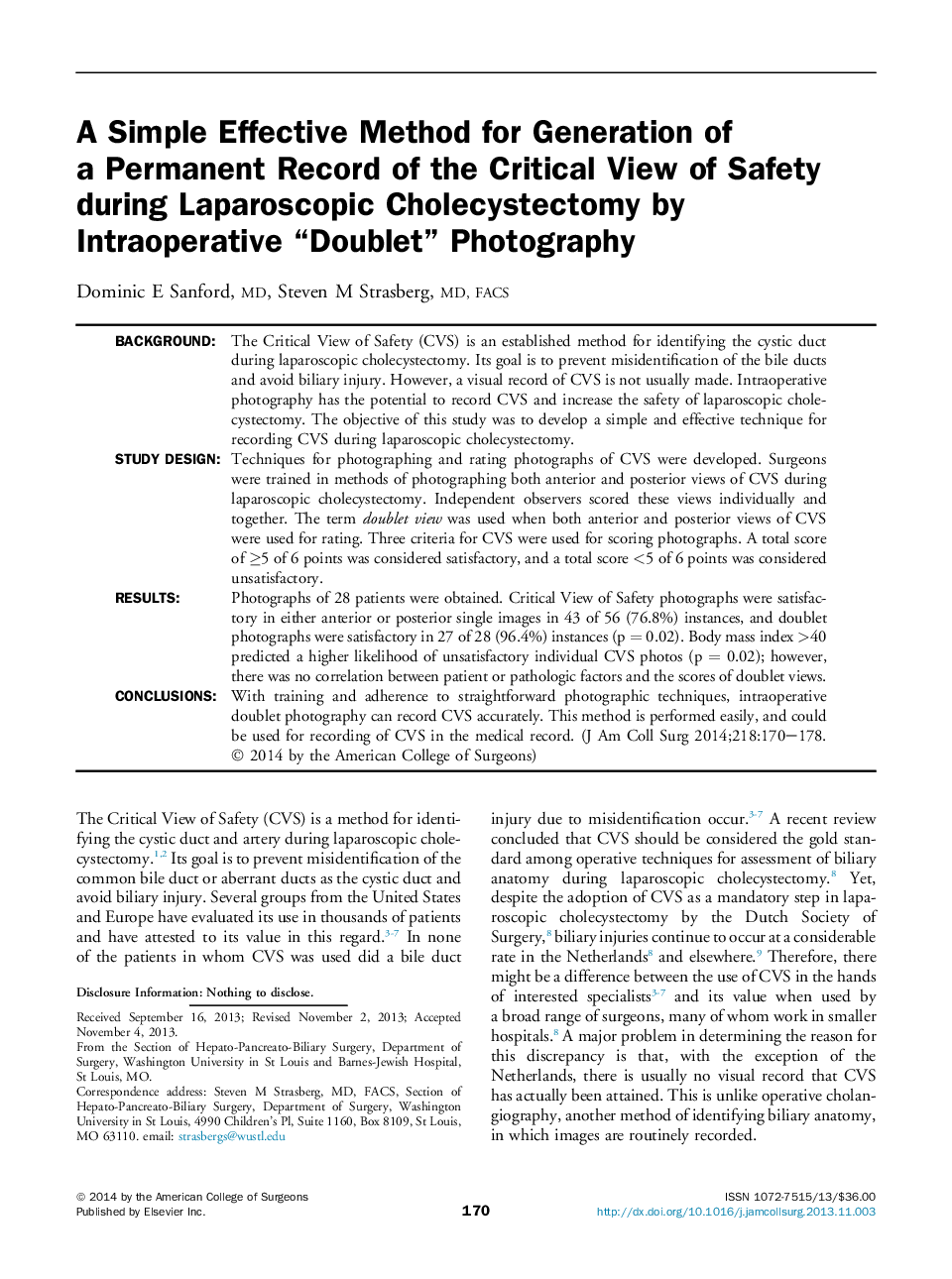| Article ID | Journal | Published Year | Pages | File Type |
|---|---|---|---|---|
| 4292387 | Journal of the American College of Surgeons | 2014 | 9 Pages |
BackgroundThe Critical View of Safety (CVS) is an established method for identifying the cystic duct during laparoscopic cholecystectomy. Its goal is to prevent misidentification of the bile ducts and avoid biliary injury. However, a visual record of CVS is not usually made. Intraoperative photography has the potential to record CVS and increase the safety of laparoscopic cholecystectomy. The objective of this study was to develop a simple and effective technique for recording CVS during laparoscopic cholecystectomy.Study DesignTechniques for photographing and rating photographs of CVS were developed. Surgeons were trained in methods of photographing both anterior and posterior views of CVS during laparoscopic cholecystectomy. Independent observers scored these views individually and together. The term doublet view was used when both anterior and posterior views of CVS were used for rating. Three criteria for CVS were used for scoring photographs. A total score of ≥5 of 6 points was considered satisfactory, and a total score <5 of 6 points was considered unsatisfactory.ResultsPhotographs of 28 patients were obtained. Critical View of Safety photographs were satisfactory in either anterior or posterior single images in 43 of 56 (76.8%) instances, and doublet photographs were satisfactory in 27 of 28 (96.4%) instances (p = 0.02). Body mass index >40 predicted a higher likelihood of unsatisfactory individual CVS photos (p = 0.02); however, there was no correlation between patient or pathologic factors and the scores of doublet views.ConclusionsWith training and adherence to straightforward photographic techniques, intraoperative doublet photography can record CVS accurately. This method is performed easily, and could be used for recording of CVS in the medical record.
